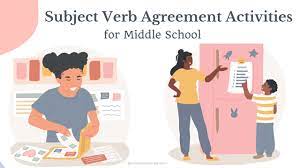Introduction:
Enrichment activities play a crucial role in the overall development of an individual, with a focus on cultivating listening skills and active citizenship. With sound educational foundations, these activities enable learners to acquire valuable life skills that enrich their perspectives towards fostering enhanced communities.
Listening:
As an essential tool for effective communication, listening lies at the core of personal and professional relationships. When people actively listen, they delve further into understanding others’ opinions, emotions, and needs, thereby encouraging a more empathetic and compassionate society.
Enrichment Activities for Listening:
1. Active Listening Exercises: Engaging in group activities where individuals take turns to speak while others attentively listen paves the way for open conversations and improved understanding. This approach allows everyone to be heard and respected.
2. Sound Mapping: Encouraging students or participants to create visual representations of sounds from various environments helps sharpen their listening abilities by refining their ability to distinguish between background noises and relevant sounds.
3. Storytelling Sessions: Holding storytelling sessions that require participants to retell stories enhances memory, comprehension, and listening skills. By sharing narratives through diverse perspectives, individuals broaden their outlook.
Citizenship:
Active citizenship refers to the act of engaging in social activities that positively contribute to one’s community’s betterment. A responsible citizen is vital for promoting harmony, mutual respect, and unity within society.
Enrichment Activities for Citizenship:
1. Community Service: Encourage involvement in community service initiatives like volunteering at local non-profit organizations or participating in environmental conservation efforts. These experiences enrich lives by instilling characteristics such as empathy, cooperation, and responsibility.
2. Debates on Social Issues: Organizing debates on contemporary social issues helps participants develop critical thinking abilities while learning how to respectfully engage in a difference of opinion.
3. Cultural Exchange Programs: Organizing cultural exchange programs exposes individuals to different traditions, customs, and languages, fostering an appreciation for multiculturalism and promoting global understanding.
Conclusion:
Enrichment activities centered on listening and citizenship offer individuals a path towards building a more empathetic, inclusive, and united society. By honing our listening skills, we help create positive spaces for open communication and relationship building. Similarly, by fostering active citizenship, we contribute to the betterment of our communities, promoting harmony and growth for all.











